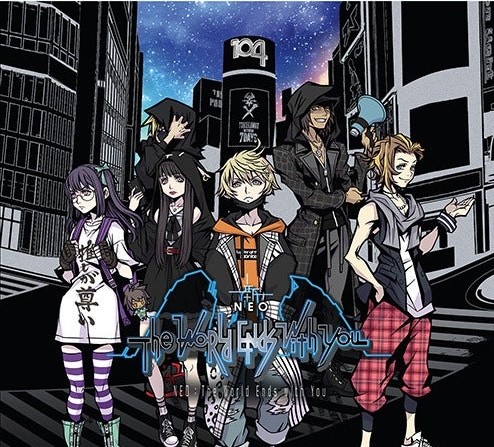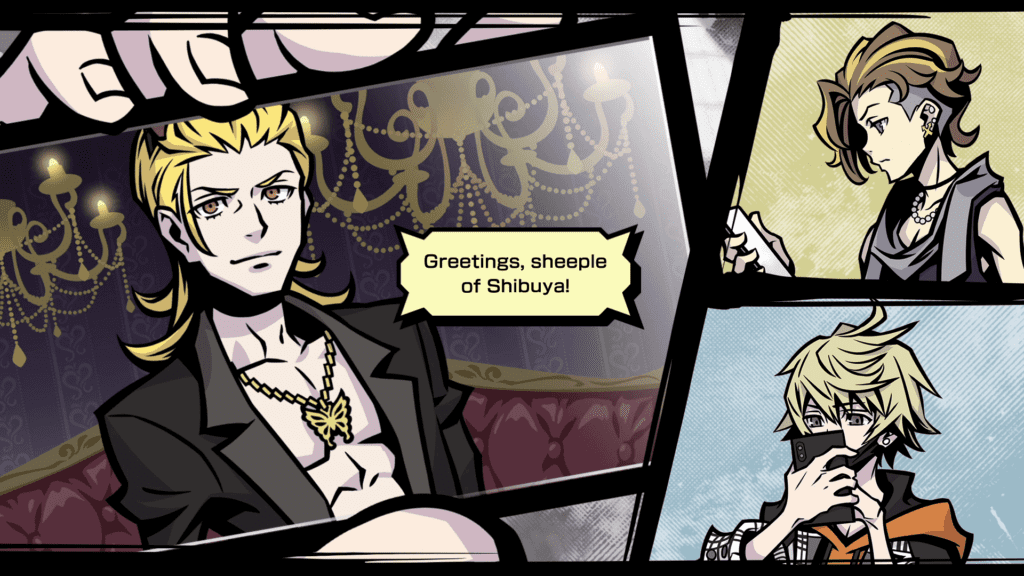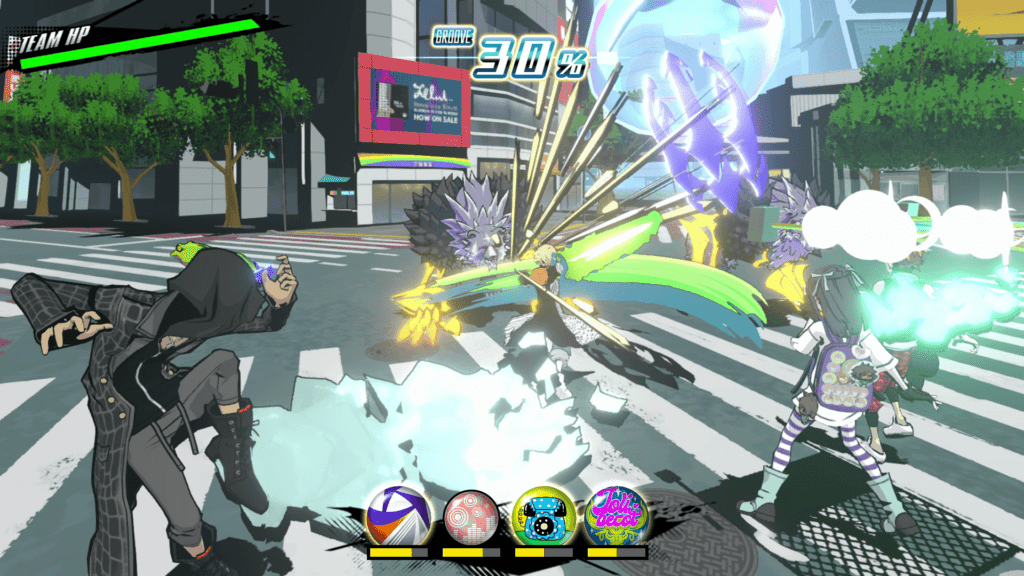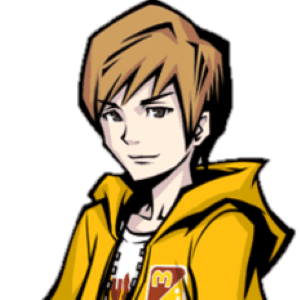Thirteen years after its original release, and seven years after I originally played it, The World Ends With You has a proper sequel. The anticipation for this title was pretty overwhelming. While getting to return to Shibuya in a new story offered the chance to see more of the setting, there was also a strong feeling of dread that came with trying to follow up such a deeply impactful cult hit. So with both excitement and fear, I marathoned the sequel for a few days after its release, and I’ve got a few things to say about it.

Co-developed by Square Enix and h.a.n.d., published by the former, and released in July of 2021, Neo: The World Ends With You is a teenage drama RPG for Nintendo Switch and Playstation 4 (PC release coming soon). Its premise involves an unassuming teenager fighting for survival in a deadly team game where friendship and fashion alike means the difference between victory and defeat. Players interact with the game by fighting enemies, solving light puzzles, buying food and clothing, and exploring the district of Shibuya, Tokyo.
The story takes place three years after the events of the first installment and follows Rindo Kanade, a relatively down to earth teenager who has trouble asserting himself. One day while hanging out with his extraverted friend Tosai “Fret” Furesawa, they find themselves caught in a psychokinetic battle between some strangers and monsters called the Noise that ends in Tosai’s death. Or at least that’s what originally happens, because just as the tragedy occurs Rindo discovers his ability to turn back time and prevents his friend’s death. At this point they discover they have entered into the Reaper’s Game, both similar and very different from before, wherein teams of Players compete to score points in hopes of liberation. Rindo and Tosai together with former antagonist Sho Minamimoto form the Wicked Twisters, and thus begin their journey to make it out of the Reaper’s Game alive.

The writing of Neo: The World Ends With You was always going to be the greatest challenge in creating a sequel to the original since the first game had impeccable mastery of character development. Neo instead surprisingly opts for a more plot-centric tale, which ultimately wound up being good but gets worse the more you think about it. Of the new protagonists, only Tosai winds up with a compelling arc (especially when you consider it’s the equal and opposite of previous protagonist Neku’s story), with the last major new character Nagi Usui having minimal development and Rindo’s growth being downright bad. Rindo’s arc is supposed to be about becoming more of a decisive person and a leader, but the presence of his time travel powers undercuts any actualizable moral from that journey. In most stories and indeed in real life, people become better leaders because they carry the weight of their failures with them as lessons, and others serve both to help them avoid those mistakes and hold them accountable if they do repeat history. Rindo by contrast has the ability to go back to correct his mistakes through the use of future knowledge and creates a timeline where the only ‘Rindo’ others truly encountered was a clairvoyant genius of a leader who has no real mistakes to answer for, and for the entire game the fix Rindo always comes to is more time travel. None of this contains any true wisdom on how to speak up and be decisive except in the most superficial ways. Messing with time is always a very delicate plot device to introduce into a story and in this case it’s clear more thought should have been put into how the protagonist’s powers and the intended message play into each other because as is they are actively at odds. While I’m on the topic of the story’s biggest negatives, I also wanted to mention that while the ending is okay, it jumps through hoops in order to make it as happy an ending as possible, and misses opportunities to have more emotional consequences for the story and resolve certain character arcs in more satisfying and redemptive ways.
With all this criticism you’d think I absolutely hated the story of Neo: The World Ends With You, but actually there was still a lot to like. Returning characters for the previous game make mostly satisfying returns. While some were set up and incorporated in the narrivite better than others, it was a treat to see how they had grown as people since the conclusion of the original. Perhaps the strongest element of the story was its rival characters, as some of the enemy Reapers and Players got a significant amount of development and became very compelling overtime. The Reaper named Shoka Sakurane for example is the best new character in the game for this very reason. What’s more was that the protagonists’ relationships to these rivals demonstrate a refreshing amount of willingness to forgive others and a desire to see them grow into better people, despite the web of lies their rivals weaved around themselves. It’s far and away the most applicable element of the story for Catholic players, as it nails the art of seeing others through loving eyes without condoning evil in the process. So on the whole, the story of Neo: The World Ends With You doesn’t manage to recapture the brilliance of the original and runs into major thematic issues, but it also contains some valuable depictions of being merciful to others in spite of the trouble they’ve caused you and follows up on the stories of the previous cast in really interesting ways.
Gameplay in Neo draws heavy inspiration from the first installment, but the difference of utility between the DS handheld and home consoles led to many overarching changes to the core systems. What resulted is a game that sacrifices some of its predecessors most fascinating and avant-garde design decisions, but also manages to create a game that is more approachable, with a better difficulty curve, and just plain more fun. The combat involves equipping one pin weapon per party member assigned to a particular button on the controller and taking down the Noise by timing combos with your attacks and dodging enemy strikes where necessary. These battles start out very simple, but over the course of the game harder enemies are introduced, new kinds of pin psychs become available, and more ways to extend combos present themselves. Even if you ignore the difficulty curve itself, the mastery curve surrounding it is crazy in-depth. Discovering the windup and timing that suits different kinds of pins, finding a combination of pins that put the enemy into the knockdown or wall splat state, different elements that alter the properties of Mash Up attacks, and passives that facilitate new strategies in themselves! The amount of experimentation and room for player expression approaches “character-action game” levels of open, with the only real limiting factor being the RPG elements governing pin collection and damage numbers.

Said RPG mechanics are thoughtful iterations of everything that came before. The clothing system is still about the same as before, but the bravery stat has been replaced by a style stat which unlocks bonus passives off of clothes if your style is greater or equal to the style requirement. While this change does leave behind the image of characters needing to be bold enough to rock the weird clothes they purchased, it does make all clothes immediately useful without that limitation. The food system is now no longer in real time, with calories being burned by fighting battles instead and stat grinding now being much more convenient than ever. The main new feature is the side quest system, which adds a few mini-stories to engage with to gain Friendship Points. Those points feed into a new skill tree that unlocks new utilities, bonus clothes, and extra restaurant menu items, with each point of the tree representing a social connection between the various residents of Shibuya. My favorite part of these new features is that they expand the player’s perception of Shibuya to really sell how many people frequent the area and the relationships they have with one another, something the first game was ok at but is made much more concrete in Neo.
The graphics in Neo: The World Ends With You make a strong showing. While the three dimensional models of the characters and Noise leave something to be desired, the other aspects are really strong. The streets of Shibuya are remade into a 3D space but the camera remains at fixed angles as you traverse them, resulting in forced-perspective shots of the city which warp and stylize the buildings in a way that is distinctly part of the series identity. Plenty of people will dislike this but I thought it was a fantastic choice. The 2D renders of all the major characters and shopkeepers remain as striking and iconic as ever, with some really emotive artwork for the new characters. Character design in general has been made more grounded from the original’s more wild and abstract fashion, but the new direction still commits to having them ooze style. One returning character who I can’t spoil here sticks out in particular, since their design visually communicates how much of an impact Neku had on them to the point of emulating his style. I give that major props.
The game’s soundtrack, naturally, doesn’t disappoint in the slightest. While there were a few songs that leaned a bit too heavily into music genres I didn’t care for, the rest are amazing across the board. The best of the new stuff definitely being Your Ocean, Chase, Breaking Free, Kill the Itch, and Unpainted. Twenty songs from both the original game and other franchise works are given remixes, and many are the best renditions of those tunes. Transformation -Neo Mix- speaks for itself.
So in conclusion, Neo: The World Ends With You is a wildly fun revisit to Shibuya with a great combat system and lots of flair to spare. The story may have hit some rough spots with some poorly thought out elements and I’m conflicted about the title not being as avant-garde as its predecessor, but overall I found it to be a satisfying and worthy successor to my favorite game. If you’re looking for an RPG with a truly different feel to it this is a great investment. I’m sure Square Enix is already making plans for where the series goes next given how hard the marketing was pushed over in Japan, but honestly if the series decided to end with this title I could make peace with that. Take a bow to the moon Wicked Twisters, you didn’t disappoint.
Scoring: 85%
Gameplay: 5/5
Story: 4/5
Art and Graphics: 4/5
Music: 5/5
Replayability: 4/5
Morality/Parental Warnings Most of the warnings I applied to the first game still apply in Neo: The World Ends With You. Psychic powers are still the means of combat, the afterlife still seems annihilationist, the ‘angels’ seem to be related to real angels only in name, foul language still pops up with decent regularity, and occasionally some characters will show a fair bit of skin (though if you can believe it, the character designs actually got less sexual overall). The only other thing I can think to add is that there is one throwaway NPC who is implied to be bisexual but that’s about it.
